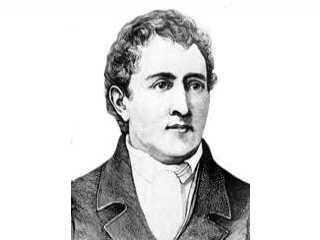
Karl Wilhelm Scheele biography
Date of birth : 1742-12-09
Date of death : 1786-05-26
Birthplace : Stralsund, Sweden
Nationality : Swedish
Category : Science and Technology
Last modified : 2011-08-31
Credited as : Pharmacist, chemist, chlorine, oxygen
The Swedish pharmacist and chemist Karl Wilhelm Scheele discovered chlorine and oxygen and isolated and characterized a variety of organic acids.
Karl Wilhelm Scheele was born on Dec. 9, 1742, at Stralsund in Swedish Pomerania. His formal education ended at age 14, when he was apprenticed to a pharmacist in Gothenburg. In this shop Scheele's scientific education began. Here was at hand a treasury of chemical materials and apparatus which excited the curiosity and latent talents of the young apprentice. In addition, he had access to his master's library, which included many of the most noteworthy chemical works of the 18th century.
Following 8 years' apprenticeship in Gothenburg, Scheele moved to Malmo as an apothecary clerk. Again he was fortunate in his master, who allowed him facilities and time for research. In Malmo, Scheele's talents received their first recognition in the person of Anders Johan Retzius, who was later to become professor of chemistry and natural history at the University of Lund. Retzius encouraged Scheele to keep a systematic record of his researches and brought his name to public attention in a paper on tartaric acid published in 1770 in the memoirs of the Royal Swedish Academy of Sciences.
Spurred by Retzius's encouragement, Scheele decided to seek employment closer to the intellectual and scientific centers of Sweden. From 1768 to 1770 he was an apothecary clerk in Stockholm and from 1770 to 1775 held a similar position in a pharmacy in Uppsala. He earned a leading position among the savants and university professors who formed the very notable elite of Swedish science at this time.
The bulk of Scheele's scientific work was published between 1770 and 1786 in the memoirs of the Swedish Academy of Sciences. He was also the author of one book, the famous Chemical Treatise on Air and Fire (1777). His researches cover such a broad range of topics that one can pinpoint only the highlights.
In the realm of inorganic chemistry Scheele's first important discoveries were made in 1774 in connection with a study of pyrolusite (manganese dioxide). He also discovered a new earth (baryta, or barium oxide) associated with pyrolusite. But the most important outcome of his researches on pyrolusite was his discovery of chlorine. This he prepared by heating a solution of pyrolusite in acid of salt (hydrochloric acid). He collected the greenish-yellow gas in a bladder and studied its highly reactive properties and noted its bleaching action. He thought this gas was acid of salt deprived of its phlogiston, and hence he called it dephlogisticated acid of salt.
In the realm of organic chemistry Scheele is noted for his isolation of a large number of organic acids derived from a variety of vegetables, fruits, and other sources. These included citric acid (from lemons), oxalic acid (from sorrel and rhubarb), malic acid (from apples and other fruits), gallic acid (from nut galls), lactic acid (from milk), and uric acid (from urine). These were among the first organic substances obtained in a chemically pure and well-identified form. Scheele has thus good claim to be considered the founder of modern organic chemistry.
Scheele's greatest claim to fame, however, rests on his discovery of oxygen. He performed his experiments on oxygen sometime between 1770 and 1773, but they were not published until 1777 in his Chemical Treatise on Air and Fire, by which time Joseph Priestley had published his independent discovery of the gas (1775). In this book Scheele first proved that common air was composed of two components: "spoiled," or "foul," air and "fire" air (oxygen). The latter was named fire air because only it will support combustion and it is therefore necessary for the production of fire. He prepared this fire air by heating a mixture of nitric and sulfuric acid in a retort and collecting the gas in a bladder attached to the neck. He also prepared the fire air by heating mercuric oxide (Priestley's method) and mixtures of manganese dioxide and sulfuric and phosphoric acids.
In 1775 Scheele was admitted to the Royal Swedish Academy of Sciences—perhaps the only apothecary's assistant to be so honored. This same year he also achieved his lifelong ambition: his own pharmacy in the small town of Koping. Although the time he could devote to his scientific research was reduced, he continued to work in a makeshift wooden laboratory behind the shop, and he produced some of the researches described above. By 1782 he had prospered sufficiently to build himself a new house and laboratory. He did not enjoy this newfound prosperity for long, however, for he died on May 26, 1786.
















